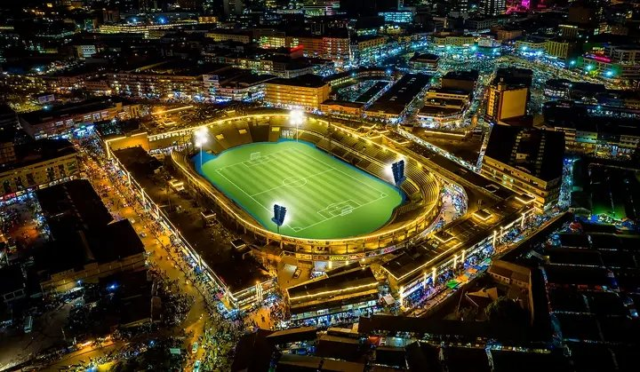
In a world often divided by stark contrasts – between light and dark, beauty and ugliness, good and evil – it’s easy to forget that these distinctions can blur when you examine something from all angles. The Nakivubo Stadium, a cherished sports complex in Kampala, Uganda, embodies this duality, presenting a compelling narrative of transformation from “Ugly Outside Pretty Inside.”
Nakivubo War Memorial Stadium, or Nakivubo Stadium for short, has a rich history dating back to its establishment in 1926. Originally conceived as a solemn tribute to Ugandans who lost their lives in World War II, this stadium underwent a significant facelift in 1954, thanks to the British colonial government’s passage of the “Nakivubo War Memorial Act.” Over the years, it became a vital hub for football enthusiasts, notably serving as the home ground for SC Villa.

However, the passage of time took its toll on Nakivubo Stadium, rendering it unfit for purpose. In 2013, it underwent renovations, reducing its capacity from 30,000 to accommodate between 20,000 and 25,000 spectators. The transformation, however, was far from complete.
Recent years have seen a remarkable resurgence of Nakivubo Stadium, led by its determined proprietor, Hamis Kiggundu. The once dilapidated interior has been rejuvenated, with the playing turf and seats restored to their former glory. This now stands as Uganda’s premier sports facility, awaiting only the final touches—floodlights and goal-line technology—to commence official matches.

However, the true paradox lies in Nakivubo Stadium’s exterior. Situated in the bustling Central Business District and a stone’s throw away from the New Taxi Park, this iconic landmark finds itself engulfed in a sprawling urban marketplace. The land, initially donated for development by the Kabaka of Buganda in 1926, has now metamorphosed into a thriving commercial district, featuring a mix of makeshift vendor shops and established businesses.
As Uganda anticipates the stadium’s official reopening, scheduled for late 2023 or early 2024, a conundrum looms. The coexistence of sports events inside and the bustling trade outside may lead to chaos and congestion on match days.

Hamis Kiggundu, entrusted with Nakivubo Stadium’s revitalization through a public-private partnership in 2015, faced criticism for the delayed start of renovations, initially focusing on the surrounding lockup shops. Though the stadium is projected to open by January 2024, recent reports suggest it may be accessible as early as November 2023. Yet, before we shower Kiggundu with gratitude for his commendable efforts, we must acknowledge the disarray that engulfs Nakivubo exterior—a pressing issue that merits our collective attention






